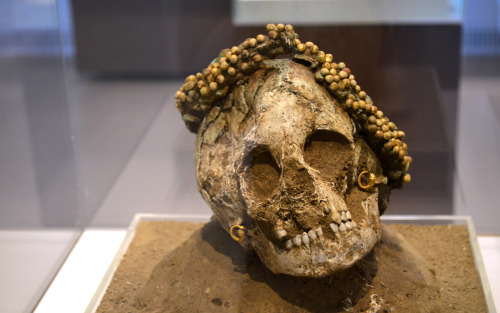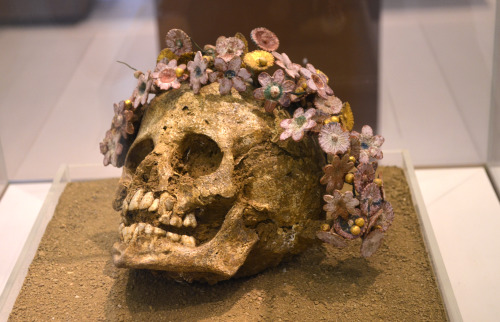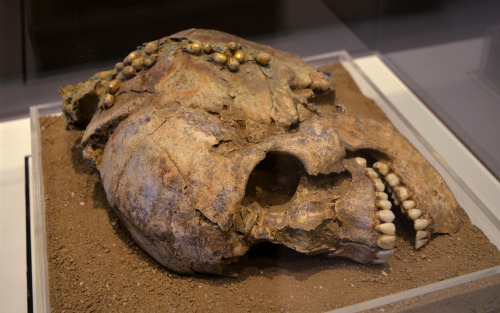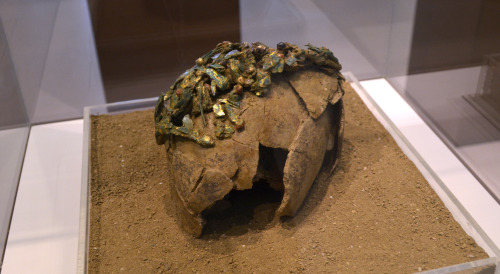greek-museums:othersidesofnobody:greek-museums:Archaeological Museum of Patra:Four crowned skulls of
greek-museums:othersidesofnobody:greek-museums:Archaeological Museum of Patra:Four crowned skulls of two little girls, and two women, from the North Cemetery in Patras, from the Hellenistic Period. The first skull bears a wreath of gilded myrtle fruits. The deceased wore golden earrings. (300-275 B.C)The second skull bears a wreath of fruits and myrtle flowers. The flowers are earthen, some gilded and others in a variety of colors. (late 4th-3rd cent. B.C)The third skull bears a gilded myrtle wreath, where apart from the leaves, some of the small fruits have survived as well.The fourth skull is also decorated with a gilded myrtle wreath. The shaft is made of lead and has been also perforated. Gilded bronze leaves and earthen fruits were attached to the small holes.A detail from the heads of the two little girls. Damages to the skulls might have occured posthumously- it was not specified in the tags.I have seen many luxurious funerary wreaths, made of gold, with extraordinary craftmanship, they are a particular trait of the burials of the Hellenistic period, and these burials were of particularly wealthy, aristocrats of the (Greek) Macedonian elite, usually families of soldiers associated with the campaigns of Alexander the Great. They were discovered either in ornately painted built tombs, under raised mounds, or well built cist graves, who often would also be decorated with painting.But these burials of commoners, those wreaths of painted, clay flowers are the most touching of them all. It just shows you the exceptional love and care that existed in those ancient families. Might have been better to to leave them in their graves. Let them rest in peace. How much time must pass before a grave is fair game for grave robbery? Hello! Although I do agree about the suggestion that human remains should be treated with great sensitivity, and I too believe that this particular exhibit could have been presented with greater care. I have to clarify that their tombs were not looted.Greece is a very small place and many times new buildings or great public works of infrastructure like highways or metro stations happen to be built over existing archaeological sites. In this case rescue excavations remove everything that can be salvaged so it won’t be destroyed by the building works.In remote locations that cannot be guarded, the contents of found tombs are always transferred to archaeological museums and storage houses because looting is still a very unpleasant reality and so human remains and other grave finds are removed to be protected from actual grave robbers.Most new archaeological museums will take care to present funerary objects, graves and human remains in a single hall devoted to them as an indication of the type of finds to be encountered in the necropolis of their area; to facilitate the work of researchers mostly and also educate people on the importance of protecting these sites so they won’t be looted in the future.I think the best museum dedicated to presenting graves as they are found, in a less exhibitionistic manner, is the Archaeological Museum of Arta, and I am pretty sure in the future many other regional museums will be moved to follow its example.So this is part of the effort to protect these human beings that once existed, and for a lot of locals visiting these funerary halls does produce a feeling of reverence towards these people. -- source link
#greece#ancient greece#ceremonial fashion#crowns#tw death#tw skulls



